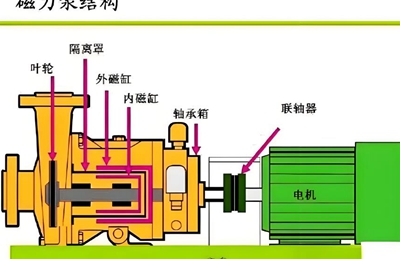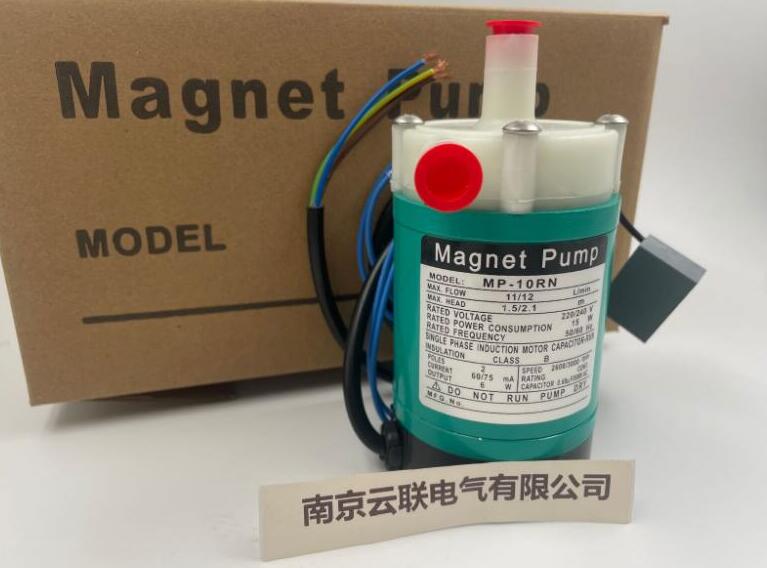
Telephone
025-52791167,52791168
13390905858
13390905858

Analysis of the main reasons why magnetic circulation pumps do not absorb water
As a widely used equipment in both industrial and civilian fields, the normal suction operation of magnetic circulation pumps is crucial for the stable operation of the entire system. However, in practical use, the situation where the magnetic circulation pump does not absorb water often occurs, which brings many inconveniences to production and life. Below, we will delve into the main reasons why magnetic circulation pumps do not absorb water.
Firstly, the sealing issue between the pump body and the suction pipeline is one of the common reasons for non suction. If the sealing components of the pump body are aged or damaged, or if there are cracks or loose connections in the suction pipeline, it will cause air to enter the pump body and pipeline. When air enters, it will form air pockets or blockages inside the pump, disrupting the normal suction process of the pump. Because the compressibility of air is much greater than that of liquid, the pump cannot create enough vacuum to suck in liquid during operation, resulting in non suction. For example, in some long-term operating chemical plants, due to the corrosion and wear of the medium, the sealing gasket of the magnetic circulation pump is prone to damage, allowing air to enter the pump body and affecting the water absorption effect.
Secondly, the installation height of the pump is too high, which can also cause it to not absorb water. The installation height of magnetic circulation pumps is limited to a certain extent, which is mainly related to the cavitation allowance of the pump. If the installation position of the pump is too high, exceeding the allowable suction height of the pump, during pump operation, the liquid flowing in the suction pipeline will vaporize due to pressure reduction, forming bubbles. These bubbles will quickly burst in the high-pressure zone inside the pump, causing damage to the impeller and pump body, and also affecting the pump’s suction capacity. Taking agricultural irrigation systems as an example, if the magnetic circulation pump is installed at a high distance from the water source, it may not absorb water, resulting in irrigation not being able to proceed normally.
Furthermore, the properties of the liquid can also affect the water absorption of the magnetic circulation pump. If the viscosity of the liquid is too high, it will increase the flow resistance of the liquid in the pipeline and pump, making it difficult for the pump to suck in the liquid. Meanwhile, high viscosity liquids can also reduce the efficiency of the pump and affect its performance. For example, in some food processing industries, it is necessary to transport high viscosity syrup and other liquids. If a regular magnetic circulation pump is used, there may be situations where it does not absorb water or has difficulty absorbing water. In addition, if the liquid contains a large amount of impurities, particles, etc., it can also block the suction pipeline and impeller of the pump, resulting in non suction. These impurities may get stuck in the clearance of the impeller, affecting its normal operation and thus affecting the water absorption effect.
In addition, damage or wear of the impeller of the pump is also an important reason for not absorbing water. The impeller is the core component of a magnetic circulation pump, and its main function is to generate centrifugal force through rotation, suck in and discharge liquid. If the impeller experiences wear, corrosion, cracks, etc., it will reduce the efficiency of the impeller, decrease the flow rate and head of the pump, resulting in non suction. For example, in some sewage treatment plants, due to the presence of corrosive substances and impurities in the sewage, the impeller of the magnetic circulation pump is prone to wear and corrosion, which affects the pump’s water absorption capacity.
Finally, improper setting of pump operating parameters may also result in non suction. For example, if the speed of the pump is too low, it will cause insufficient centrifugal force generated by the impeller, making it impossible to suck in liquid. Alternatively, if the outlet valve of the pump is too open, causing the pump head to be too low, it can also affect the water absorption effect. In actual operation, it is necessary to set the operating parameters of the pump reasonably according to specific working conditions and requirements to ensure the normal suction and operation of the pump.
In summary, the reasons why magnetic circulation pumps do not absorb water are multifaceted, including sealing issues, installation height, liquid properties, impeller damage, and operating parameter settings. In practical use, it is necessary to comprehensively consider and analyze these factors, timely discover and solve problems, in order to ensure the normal operation and water absorption effect of the magnetic circulation pump.

telephone:025-52791167,52791168
Fax:025-52791169
Phone :13390905858
mailbox:njxj888@163.com skype:yluedq
Address:Jiangning Shuanglong Avenue No.1222 Nanjing, Jiangsu. China P.O. 211100